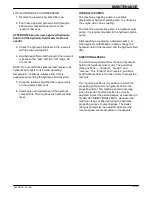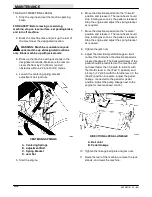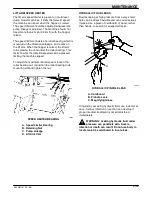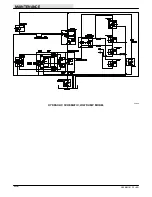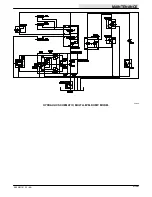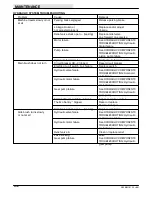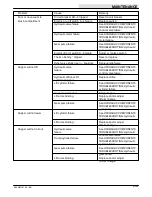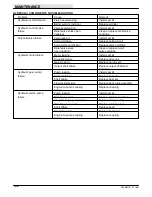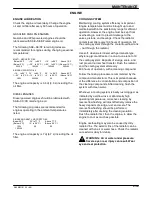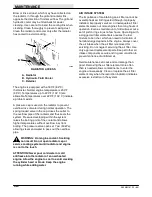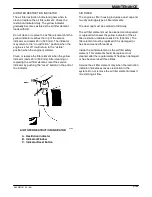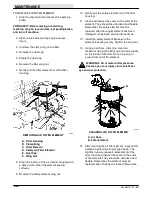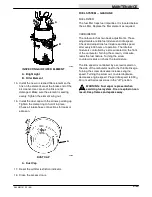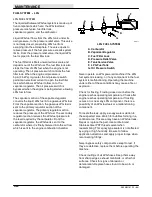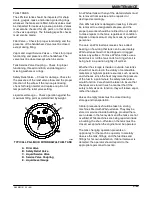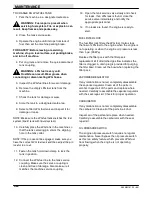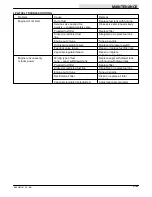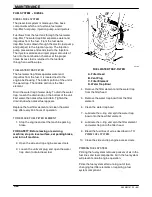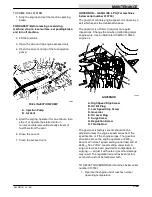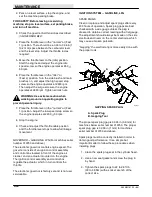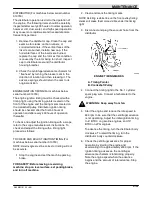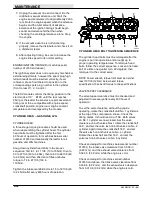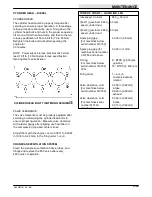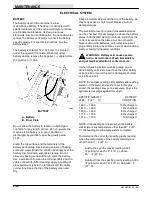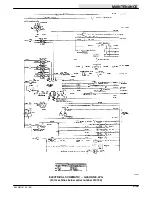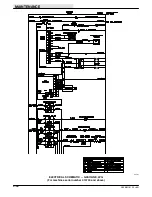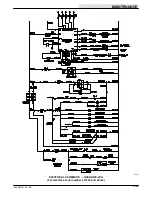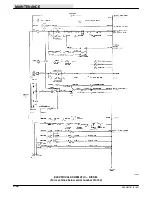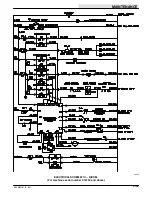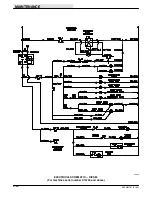
MAINTENANCE
3-25
285 MM191 (12---89)
FUEL TANKS
The LPG fuel tanks should be inspected for sharp
dents, gouges, leaks, and broken protecting rings
whenever the tanks are refilled. All tank valves must
be inspected for leaks using a soap solution. Valves
must also be checked for dirt, paint, or other debris
in the valve openings. The following specific checks
must also be made:
Filler Valve --- Check for proper functioning and the
presence of the handwheel. Valve must be closed
except during filling.
Vapor and Liquid Service Valves --- Check for proper
functioning and presence of the handwheel. The
valve must be closed except when in service.
Tank Service Valve Coupling --- Check for proper
functioning, thread condition, and damaged or
missing washers or o-rings.
Safety Relief Valve --- Check for damage. Check for
the presence of the relief valve elbow and the proper
direction of the elbow. If the rain cap is missing,
check for foreign matter and replace cap. Do not
tamper with the relief valve setting.
Liquid Level Gauge --- Check operation against the
maximum filling point as determined by weight.
A
B
C
D
E
03485
TYPICAL LPG LIQUID WITHDRAWAL FUEL TANK
A. Filler Valve
B. Safety Relief Valve
C. Liquid Service Valve
D. Service Valve Coupling
E. Liquid Level Gauge
An LPG fuel tank with any of the stated defects must
be removed from service and be repaired or
destroyed accordingly.
If an LPG fuel tank is damaged or leaking, it should
be removed to a designated safe area, and the
proper personnel should be notified. Do not attempt
to make repairs to the tank, regardless of condition.
Repairs or disposal must only be made by qualified
personnel.
The care an LPG fuel tank receives has a direct
bearing on how long that tank can be used safely.
LPG fuel tanks must not be dropped or dragged
across any surface. To move LPG fuel tanks, use a
hand truck or roll the tank on its foot ring while it is
being held in a position slightly off vertical.
Whether the storage is inside or outside, fuel tanks
should not be stored in the vicinity of combustible
materials or high temperature sources such as ovens
and furnaces, since the heat may raise the pressure
of the fuel to a point where the safety relief valves
would function. Care should be taken to insure that
the tanks are stored in such a manner that if the
safety relief valves do function, they will relieve vapor,
rather than liquid.
Valves on empty tanks must be closed during
storage and transportation.
Similar precautions should be taken in storing
machines fitted with LPG fuel tanks. They may be
stored or serviced inside buildings, provided there
are no leaks in the fuel system and the tanks are not
overfilled. While machines are being repaired inside
a building, the shut---off valve on the tank must be
closed, except when the engine must be operated.
The tank changing operation presents an
opportunity for the machine operator to carefully
observe the tank, fittings, and the fuel lines and
fittings for his own satisfaction. If abnormal wear is
detected, the operator should report it to the
appropriate personnel for action.
Summary of Contents for 285
Page 1: ...r 285 Sweeper Scrubber ...
Page 6: ...ABOUT THIS MANUAL 285 MM191 12 89 d ...
Page 18: ...SPECIFICATIONS 285 MM191 12 89 1 2 ...
Page 22: ...SPECIFICATIONS 285 MM191 12 89 1 6 ...
Page 24: ...OPERATION 2 2 285 MM191 12 89 ...
Page 62: ...OPERATION 2 40 285 MM191 NIL ...
Page 76: ...MAINTENANCE 285 MM191 12 89 3 14 04644 HYDRAULIC SCHEMATIC LOW DUMP MODEL ...
Page 77: ...MAINTENANCE 3 15 285 MM191 12 89 04645 HYDRAULIC SCHEMATIC MULTI LEVEL DUMP MODEL ...
Page 103: ...MAINTENANCE 3 41 285 MM191 6 90 06187 ELECTRICAL SCHEMATIC AUTO SHAKER RFS ...
Page 104: ...MAINTENANCE 285 MM191 6 90 3 42 06187 ELECTRICAL SCHEMATIC AUTO SHAKER RFS ...
Page 134: ...APPENDIX 285 MM191 12 89 4 2 ...

